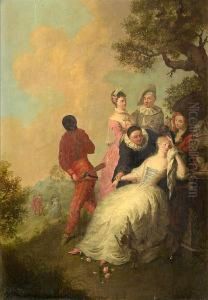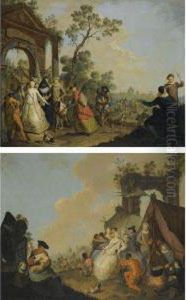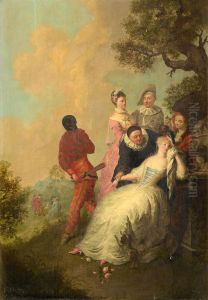Gerard Joseph Xavery Paintings
Gerard Joseph Xavery was a Dutch painter and draughtsman, born in 1683 in Antwerp, Spanish Netherlands (present-day Belgium). His family, of Flemish origin, had several members who were involved in painting, which suggests that he grew up in an environment rich with artistic influence. However, there is limited documentation on Xavery's early life and training, which was not uncommon for artists of his period.
Xavery's work is associated with the Dutch Golden Age, a period in the 17th century during which Dutch art, science, trade, and the military were among the most acclaimed in the world. He is best known for his flower paintings and still-life works, which exhibit the precision and attention to detail characteristic of the era. His compositions often featured an array of flowers arranged in ornate vases, demonstrating a mastery of texture and color that provided a sense of depth and realism.
Although Xavery was born in Antwerp, he spent most of his career in the Dutch Republic, specifically in The Hague, where he became a member of the Confrerie Pictura, an association of painters. The Confrerie was established as an alternative to the more exclusive Guild of Saint Luke, offering a more liberal approach to the arts and serving as a hub for artists to share ideas and techniques.
Gerard Joseph Xavery's contributions to the art world during his lifetime were modest when compared to the leading masters of the Dutch Golden Age. Nevertheless, his works have been appreciated for their delicate handling of natural elements and contribution to the still-life genre. Xavery’s art represents the continued interest in detailed floral arrangements and the study of nature that persisted into the 18th century, bridging the gap between the Baroque sensibilities of the 17th century and the emerging Rococo style.
Xavery passed away in 1735, and while he may not have gained the same level of fame as some of his contemporaries, his paintings continue to be of interest to art historians and collectors. His works can be found in various collections and are studied for their representation of the transition in art styles during the early 18th century.


